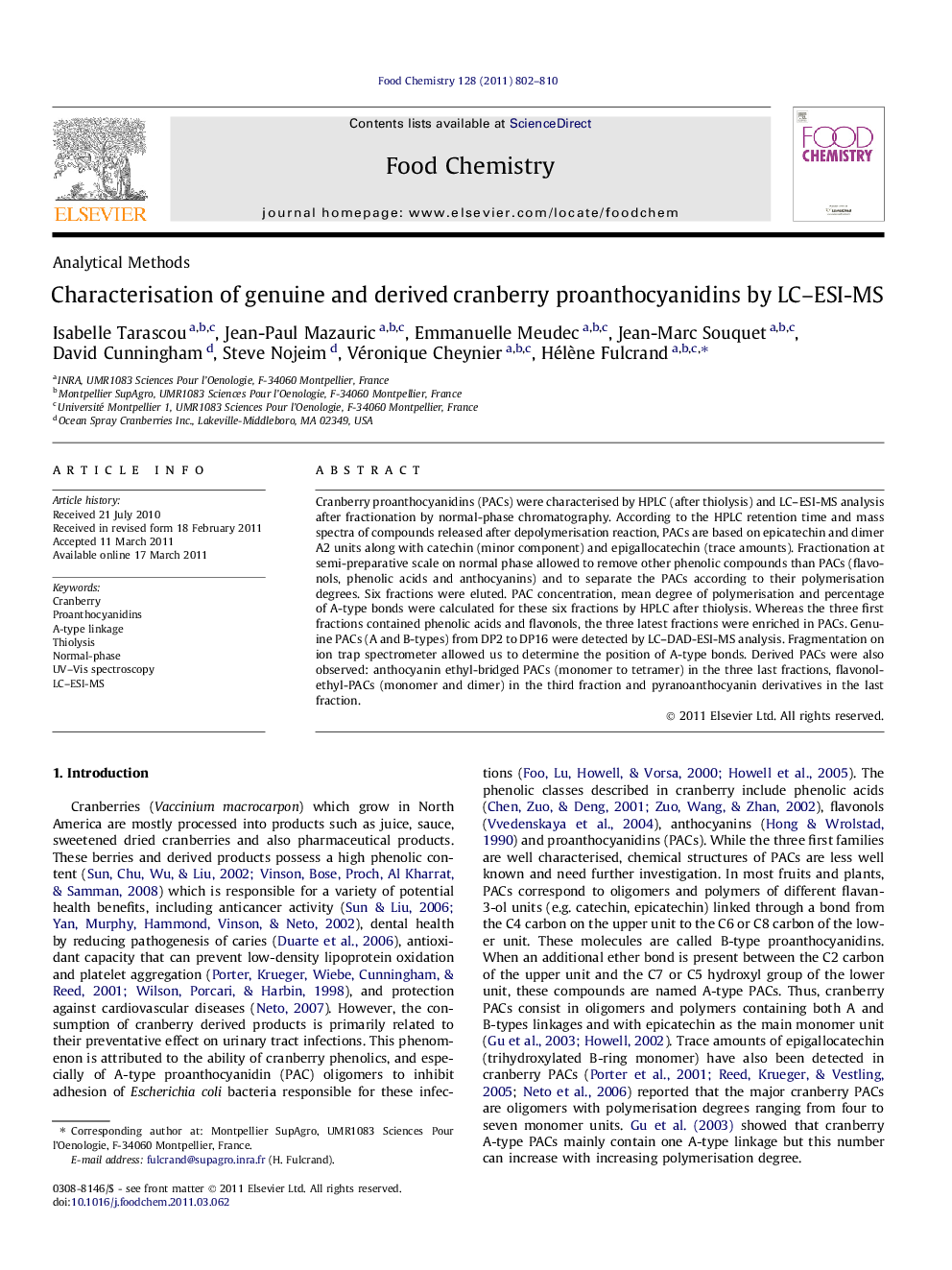| Article ID | Journal | Published Year | Pages | File Type |
|---|---|---|---|---|
| 1187048 | Food Chemistry | 2011 | 9 Pages |
Cranberry proanthocyanidins (PACs) were characterised by HPLC (after thiolysis) and LC–ESI-MS analysis after fractionation by normal-phase chromatography. According to the HPLC retention time and mass spectra of compounds released after depolymerisation reaction, PACs are based on epicatechin and dimer A2 units along with catechin (minor component) and epigallocatechin (trace amounts). Fractionation at semi-preparative scale on normal phase allowed to remove other phenolic compounds than PACs (flavonols, phenolic acids and anthocyanins) and to separate the PACs according to their polymerisation degrees. Six fractions were eluted. PAC concentration, mean degree of polymerisation and percentage of A-type bonds were calculated for these six fractions by HPLC after thiolysis. Whereas the three first fractions contained phenolic acids and flavonols, the three latest fractions were enriched in PACs. Genuine PACs (A and B-types) from DP2 to DP16 were detected by LC–DAD-ESI-MS analysis. Fragmentation on ion trap spectrometer allowed us to determine the position of A-type bonds. Derived PACs were also observed: anthocyanin ethyl-bridged PACs (monomer to tetramer) in the three last fractions, flavonol-ethyl-PACs (monomer and dimer) in the third fraction and pyranoanthocyanin derivatives in the last fraction.
► A cranberry extract was fractionated by preparative normal phase HPLC. ► Genuine and reaction products of cranberry PACs were characterised by LC–ESI-MS. ► Ethyl-linked PACs with either anthocyanin or flavonol units were detected. ► Pyranoanthocyanin–flavanol derivatives were also found in this cranberry extract.
